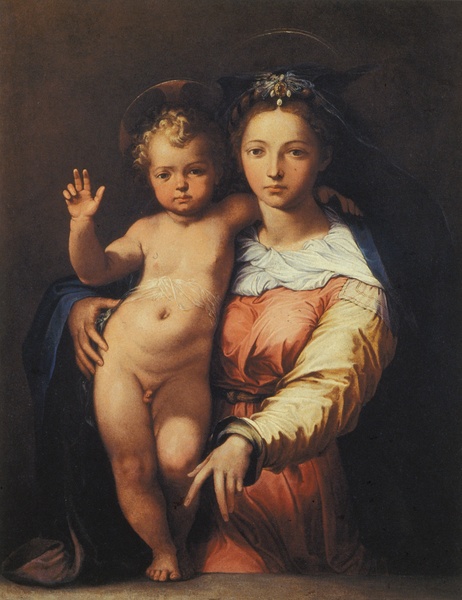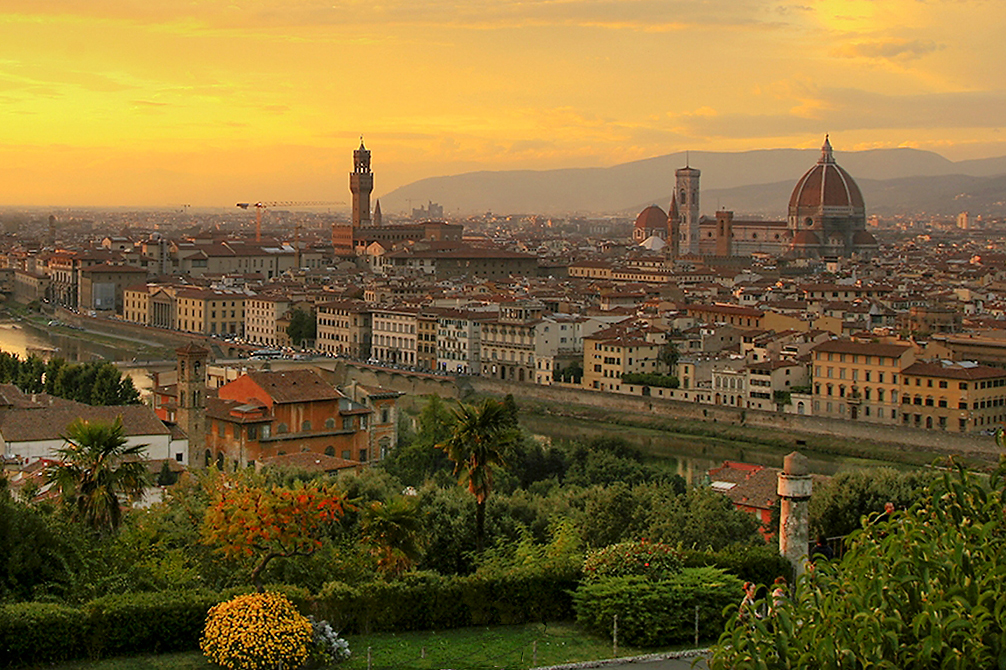|
Palazzo Baldassini
Palazzo Baldassini is a palace in Rome, Italy, designed by the Renaissance architect Antonio da Sangallo the Younger in about 1516–1519. It was designed for the papal jurist from Naples, Melchiorre Baldassini. The ground floor was used for shops or workshops, and the piano nobile consisted of private apartments. The interior was frescoed by Giovanni da Udine, Perin del Vaga, Polidoro da Caravaggio Polidoro Caldara, usually known as Polidoro da Caravaggio ( – 1543) was an Italian painter of the Mannerist period, "arguably the most gifted and certainly the least conventional of Raphael's pupils", who was best known for his now-vanished pa ... and Maturino da Firenze. Notes Houses completed in 1519 Baldassini Renaissance architecture in Rome Rome R. VIII Sant'Eustachio {{Italy-palace-stub ... [...More Info...] [...Related Items...] OR: [Wikipedia] [Google] [Baidu] |
Renaissance
The Renaissance ( , ) , from , with the same meanings. is a period in European history marking the transition from the Middle Ages to modernity and covering the 15th and 16th centuries, characterized by an effort to revive and surpass ideas and achievements of classical antiquity. It occurred after the Crisis of the Late Middle Ages and was associated with great social change. In addition to the standard periodization, proponents of a "long Renaissance" may put its beginning in the 14th century and its end in the 17th century. The traditional view focuses more on the early modern aspects of the Renaissance and argues that it was a break from the past, but many historians today focus more on its medieval aspects and argue that it was an extension of the Middle Ages. However, the beginnings of the period – the early Renaissance of the 15th century and the Italian Proto-Renaissance from around 1250 or 1300 – overlap considerably with the Late Middle Ages, conventionally da ... [...More Info...] [...Related Items...] OR: [Wikipedia] [Google] [Baidu] |
Rome
, established_title = Founded , established_date = 753 BC , founder = King Romulus (legendary) , image_map = Map of comune of Rome (metropolitan city of Capital Rome, region Lazio, Italy).svg , map_caption = The territory of the ''comune'' (''Roma Capitale'', in red) inside the Metropolitan City of Rome (''Città Metropolitana di Roma'', in yellow). The white spot in the centre is Vatican City. , pushpin_map = Italy#Europe , pushpin_map_caption = Location within Italy##Location within Europe , pushpin_relief = yes , coordinates = , coor_pinpoint = , subdivision_type = Country , subdivision_name = Italy , subdivision_type2 = Region , subdivision_name2 = Lazio , subdivision_type3 = Metropolitan city , subdivision_name3 = Rome Capital , government_footnotes= , government_type = Strong Mayor–Council , leader_title2 = Legislature , leader_name2 = Capitoline Assemb ... [...More Info...] [...Related Items...] OR: [Wikipedia] [Google] [Baidu] |
Italy
Italy ( it, Italia ), officially the Italian Republic, ) or the Republic of Italy, is a country in Southern Europe. It is located in the middle of the Mediterranean Sea, and its territory largely coincides with the homonymous geographical region. Italy is also considered part of Western Europe, and shares land borders with France, Switzerland, Austria, Slovenia and the enclaved microstates of Vatican City and San Marino. It has a territorial exclave in Switzerland, Campione. Italy covers an area of , with a population of over 60 million. It is the third-most populous member state of the European Union, the sixth-most populous country in Europe, and the tenth-largest country in the continent by land area. Italy's capital and largest city is Rome. Italy was the native place of many civilizations such as the Italic peoples and the Etruscans, while due to its central geographic location in Southern Europe and the Mediterranean, the country has also historically been home ... [...More Info...] [...Related Items...] OR: [Wikipedia] [Google] [Baidu] |
Antonio Da Sangallo The Younger
250px, A model of the Apostolic Palace, which was the main project of Bramante during Sangallo's apprenticeship. 250px, The church of Santa Maria di Loreto near the Rome.html"_;"title="Trajan's_Market_in_Rome">Trajan's_Market_in_Rome. image:Palazzo_Farnese_(Caprarola).jpg.html" ;"title="Rome..html" ;"title="Rome.html" ;"title="Trajan's Market in Trajan's_Market_in_Rome.">Rome.html"_;"title="Trajan's_Market_in_Rome">Trajan's_Market_in_Rome. image:Palazzo_Farnese_(Caprarola).jpg">thumb.html" ;"title="Rome">Trajan's Market in Rome.html"_;"title="Trajan's_Market_in_Rome">Trajan's_Market_in_Rome. image:Palazzo_Farnese_(Caprarola).jpg">thumb">250px.html" ;"title="Rome.">Rome.html" ;"title="Trajan's Market in Rome">Trajan's Market in Rome. image:Palazzo Farnese (Caprarola).jpg">thumb">250px">The Villa Farnese in Caprarola; the initial design was by Sangallo and Baldassare Peruzzi. image:Hendrik Frans van Lint - Rome, A View of San Giovanni dei Fiorentini.jpg, 250px, San Giovanni de ... [...More Info...] [...Related Items...] OR: [Wikipedia] [Google] [Baidu] |
Giovanni Da Udine
image:Le Vite - Giovanni da Udine.jpg, 150px, Portrait in Vasari's Vite Giovanni Nanni, also Giovanni de' Ricamatori, better known as Giovanni da Udine (1487–1564), was an Italian painter and architect born in Udine. A painter also named ''Giovanni da Udine'' was exiled from his native city in 1472. Biography As a student and assistant of Raphael, he was responsible for most of the "decorative" (i.e. non-narrative) elements of the major Raphaellesque projects in Rome, and he was a specialist in fresco and stucco grotesque decorations. These included the stucco work in the Loggia di Raffaello (Vatican, 1517–1519) and the heavy fruit-laden wreaths in the ''loggia di psiche'' in the Villa Farnesina. He also assisted in the construction of a few monumental fountains, which are now destroyed. He is also known for his drawings of birds and fruit. image:Giovanni da Udine Detalle de las decoraciones de la Loggeta del Cardenal Bibbiena.jpg, 180 px, Decoration for Loggia of Cardinal Bib ... [...More Info...] [...Related Items...] OR: [Wikipedia] [Google] [Baidu] |
Perin Del Vaga
Perino (or Perin) del Vaga (nickname of Piero Bonaccorsi) (1501 – October 19, 1547) was an Italian painter and draughtsman of the Late Renaissance/Mannerism. Biography Perino was born near Florence. His father ruined himself by gambling, and became a soldier in the invading army of Charles VIII. His mother died when he was but two months old; but shortly afterwards he was taken up by his father's second wife. Perino was first apprenticed to a druggist, but soon passed into the hands of a mediocre painter, Andrea de' Ceri,Noted in Vasari's biography. and when eleven years of age, of Ridolfo Ghirlandaio. Perino was one of Ghirlandaio's most talented pupils. Another mediocre painter, Vaga from Toscanella, undertook to settle the boy in Rome. Perino, when he at last reached Rome, was utterly poor, and with no clear prospect beyond journey-work for trading decorators. He was eventually entrusted with some of the subordinate work undertaken by Raphael in the Vatican. He assisted ... [...More Info...] [...Related Items...] OR: [Wikipedia] [Google] [Baidu] |
Polidoro Da Caravaggio
Polidoro Caldara, usually known as Polidoro da Caravaggio ( – 1543) was an Italian painter of the Mannerist period, "arguably the most gifted and certainly the least conventional of Raphael's pupils", who was best known for his now-vanished paintings on the facades of Roman houses. He was unrelated to the later painter Michelangelo Merisi da Caravaggio, usually known just as Caravaggio, but both came from the town of Caravaggio. Life and work Polidoro Caldara was born in Caravaggio, in what is now Lombardy. According to Vasari, whilst working as a labourer carrying the materials for the builders of the Vatican logge he ingratiated himself with the artists, and attracted the admiration of Maturino da Firenze, one of Raphael's main assistants in the ongoing decoration of the Vatican. He then joined Raphael's large workshop, in about 1517, and worked on the Raphael Rooms in the Vatican. He and Maturino then set up as painters of palace facades, usually in sgraffito, with ... [...More Info...] [...Related Items...] OR: [Wikipedia] [Google] [Baidu] |
Maturino Da Firenze
Maturino da Firenze (1490–1528) was an Italian painter, born in Florence, but working in Rome during the Renaissance. Vasari described the relationship between Polidoro da Caravaggio and Maturino as exceedingly close: Vasari did not distinguish between the two painters in the joint works of Polidoro and Maturino Dr. Evelina Borea Evelina Borea (born 1931, Ferrara, Italy) is an Italian art historian, author and curator. Biography Evelina Borea obtained a degree in History of Art in 1958 at the University of Florence. Her tutor and mentor was art historian Roberto Longhi. ..., in her recent study on Polidoro, considers the contribution of the Florentine painter, Maturino, to be minimal. Most sources say he died ca.1528, but some say he was killed in the Sack of Rome the previous year.Lucy Whitaker, Martin Clayton, The Art of Italy in the Royal Collection; Renaissance and Baroque, p. 62, Royal Collection Publications, 2007, Notes External linksGiorgio Vasari, ''Vit ... [...More Info...] [...Related Items...] OR: [Wikipedia] [Google] [Baidu] |
Houses Completed In 1519
A house is a single-unit residential building. It may range in complexity from a rudimentary hut to a complex structure of wood, masonry, concrete or other material, outfitted with plumbing, electrical, and heating, ventilation, and air conditioning systems.Schoenauer, Norbert (2000). ''6,000 Years of Housing'' (rev. ed.) (New York: W.W. Norton & Company). Houses use a range of different roofing systems to keep precipitation such as rain from getting into the dwelling space. Houses may have doors or locks to secure the dwelling space and protect its inhabitants and contents from burglars or other trespassers. Most conventional modern houses in Western cultures will contain one or more bedrooms and bathrooms, a kitchen or cooking area, and a living room. A house may have a separate dining room, or the eating area may be integrated into another room. Some large houses in North America have a recreation room. In traditional agriculture-oriented societies, domestic animals such as ... [...More Info...] [...Related Items...] OR: [Wikipedia] [Google] [Baidu] |
Palaces In Rome
A palace is a grand residence, especially a royal residence, or the home of a head of state or some other high-ranking dignitary, such as a bishop or archbishop. The word is derived from the Latin name palātium, for Palatine Hill in Rome which housed the Roman Empire, Imperial residences. Most European languages have a version of the term (''palais'', ''palazzo'', ''palacio'', etc.), and many use it for a wider range of buildings than English. In many parts of Europe, the equivalent term is also applied to large private houses in cities, especially of the aristocracy; often the term for a large country house is different. Many historic palaces are now put to other uses such as parliaments, museums, hotels, or office buildings. The word is also sometimes used to describe a lavishly ornate building used for public entertainment or exhibitions such as a movie palace. A palace is distinguished from a castle while the latter clearly is fortified or has the style of a fortification ... [...More Info...] [...Related Items...] OR: [Wikipedia] [Google] [Baidu] |
Renaissance Architecture In Rome
The Renaissance ( , ) , from , with the same meanings. is a period in European history The history of Europe is traditionally divided into four time periods: prehistoric Europe (prior to about 800 BC), classical antiquity (800 BC to AD 500), the Middle Ages (AD 500 to AD 1500), and the modern era (since AD 1500). The first early ... marking the transition from the Middle Ages to modernity and covering the 15th and 16th centuries, characterized by an effort to revive and surpass ideas and achievements of classical antiquity. It occurred after the Crisis of the Late Middle Ages and was associated with great social change. In addition to the standard periodization, proponents of a "long Renaissance" may put its beginning in the 14th century and its end in the 17th century. The traditional view focuses more on the Early modern period, early modern aspects of the Renaissance and argues that it was a break from the past, but many historians today focus more on its medieval as ... [...More Info...] [...Related Items...] OR: [Wikipedia] [Google] [Baidu] |






